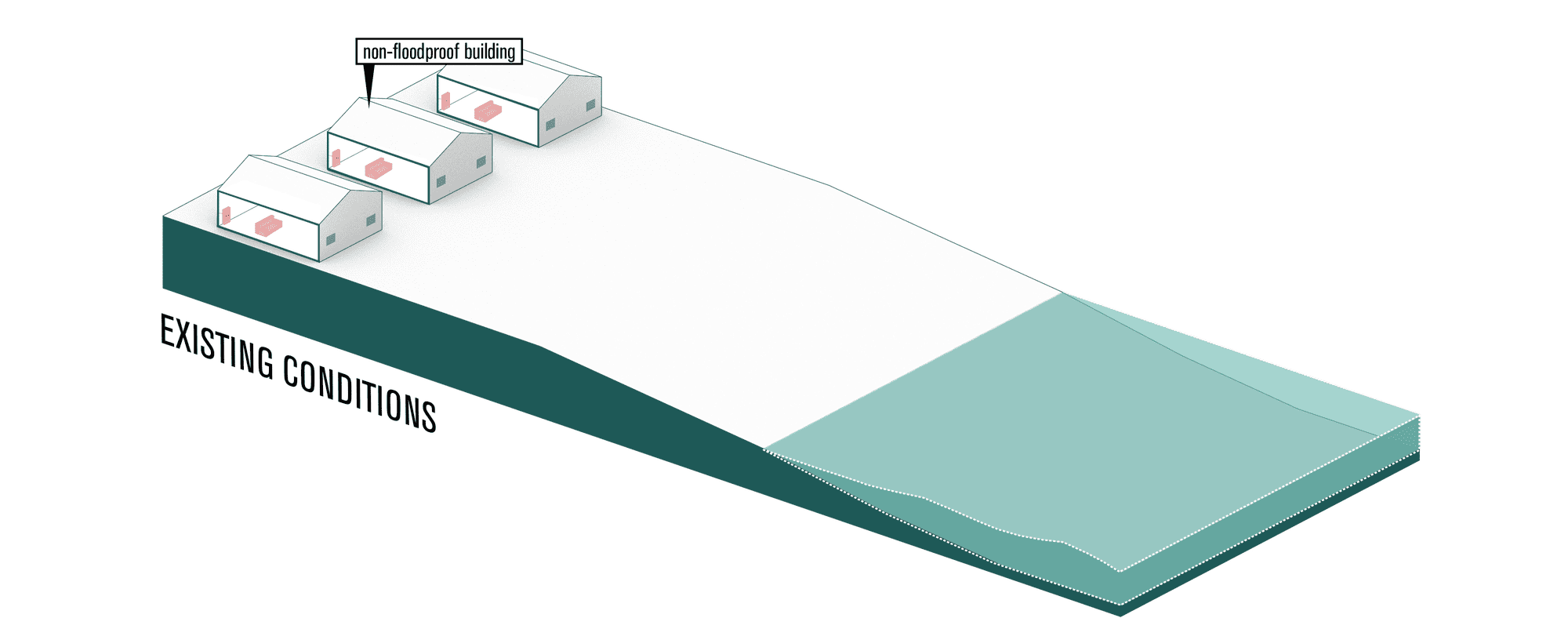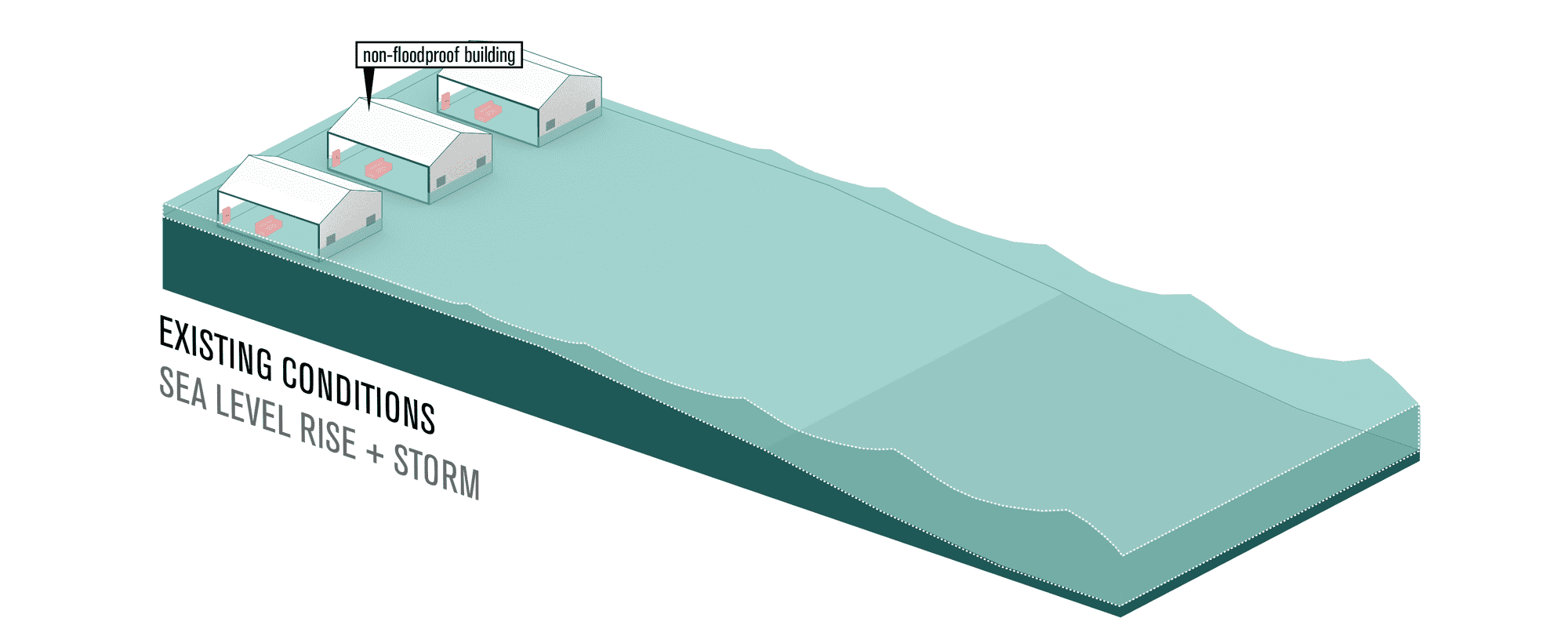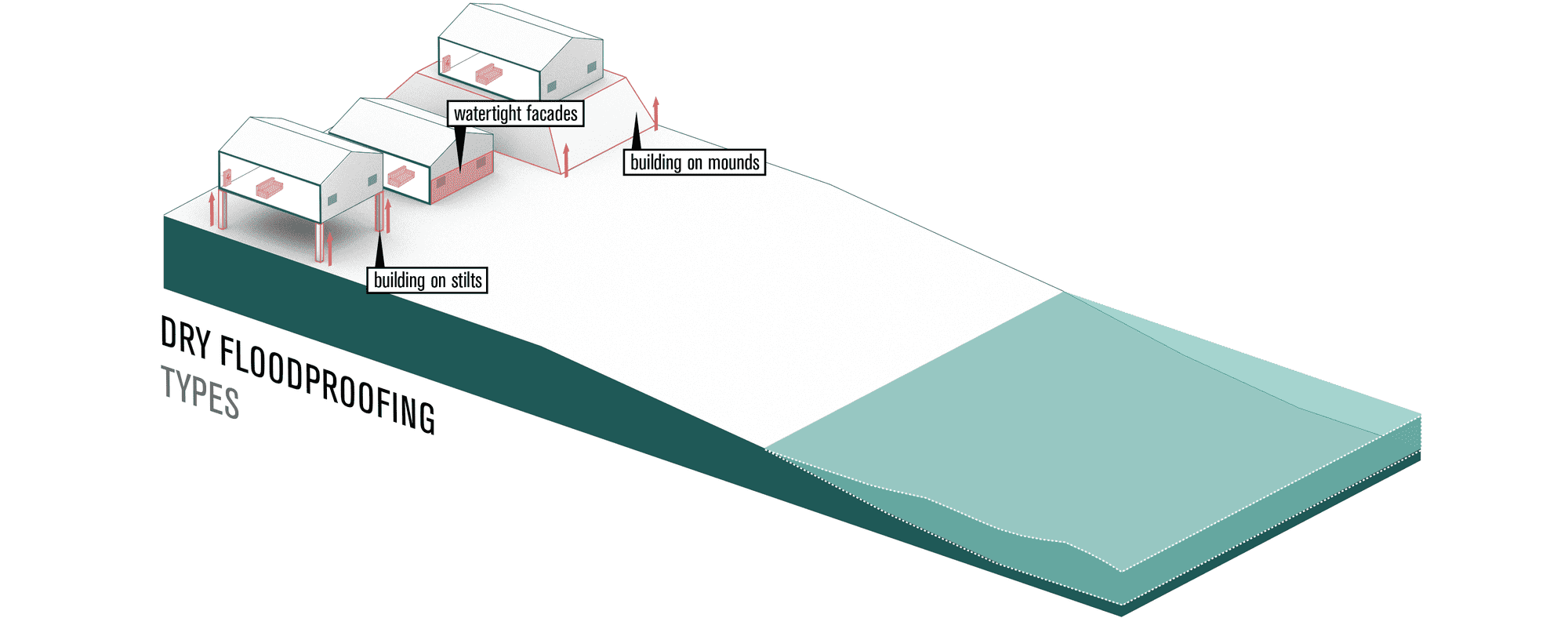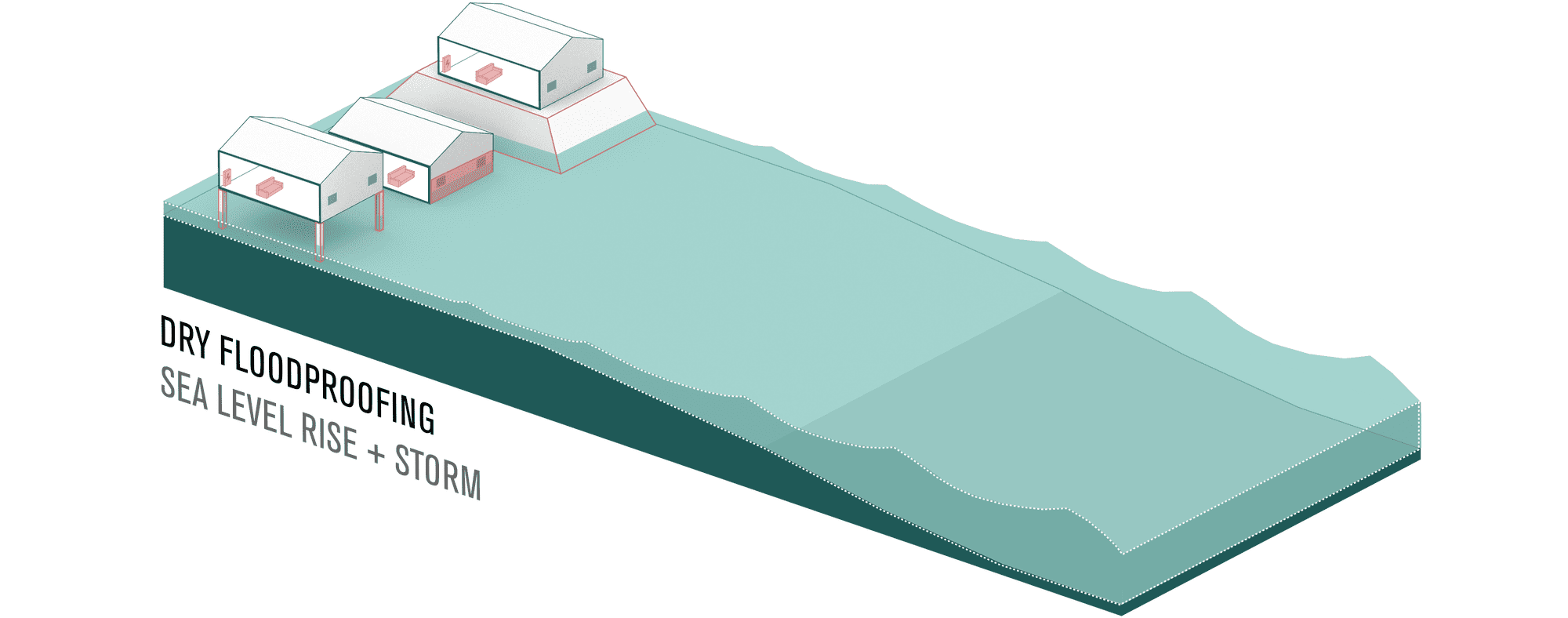Adaptation Strategy: Dry Floodproofing
Dry floodproofing is a practice of utilizing waterproof membranes and other types of sealants to prevent floodwater from entering a building.1 It may also include the installation of watertight seals over windows and doors, diversion of water using berms and mounds, or the establishment of minimum setback regulations for building construction. 3 5 6 7 11 The work required to dry flood-proof a structure could be determined through a risk assessment following local government requirements, guidelines, or policies.2 3 Depending on the complexity of the requirements, dry floodproofing is usually a cost-effective retrofit. Dry floodproofing contributes to a reduction in potential flood damage by decreasing the probability of inundation to the interior of a building. Dry floodproofing is a useful alternative as a flood mitigation measure where the relocation or elevation of a building is not a plausible cost-effective or technically feasible alternative. 12
How it works
Types of dry floodproofing
- Continuous impermeable walls include sealing the exterior walls of a building, utilizing waterproof membranes that are impermeable and that have the potential to strengthen the walls.
- Flood resistant interior core areas include important components and areas of a building that are made flood-resistant instead of dry proofing the entire footprint of the building.
- Flood shields are watertight structures that close any opening in a building’s exterior walls to prevent the entry of floodwater. 12
- Internal drainage systems are used to remove water that might seep into a building through fissures or other openings that comprise a flood protection system.
Benefits
- Builds resilience by providing a secondary means of protection to dikes
- Improves flood protection when other measures are difficult to implement due to space constraints
- Less costly when compared to other methods of flood retrofitting
- The implementation does not require additional land space 11
- Can be used to bring non-residential structures into compliance with floodplain management regulations and codes 12
Challenges
- Will not minimize the impacts of high-velocity water flow and wave action on a building or structure 11
- May be difficult to apply to existing buildings and infrastructure
- May not always lead to an improvement in flood mitigation that aligns with existing floodplain management bylaws 11
- May fail, if flooding exceeds the level of flood protection intervention
Example projects
Farm Building FCL’s and Setbacks
BC, Canada
Dry floodproofing can also be in the form of defining flood construction levels (FCLs) and setbacks for new development. The government of British Columbia and the Ministry of Agriculture provide guidelines on the application of flood construction levels and floodplain setbacks.7 In British Columbia, FCLs are used to protect living spaces, electrical and mechanical services from the impact of floodwaters above.8 FCLs and setbacks are generally established in some locations but in some cases, they are defined by the elevation above a natural boundary such as a water source.9 Additionally, FCLs and setbacks can also be associated with land use, specifically for the location of farm buildings based on building type and size.10
HafenCity
Hamburg, Germany
HafenCity is an example of flood adaptation as an alternative to dike construction. The town wanted to retain the beautiful sightlines down to the water, therefore, a dike was not the best option.4 Instead, all new buildings were raised on plinths 8 to 9 meters above sea level.5 Plinths are artificial mounds that are built using compacted fill, and the interior function as spaces for underground parking. In addition to raising buildings, the roads and bridges of HafenCity are also built roughly eight (8) meters above sea level, therefore allowing the town to function seamlessly during a storm surge.6
Citations
-
1.
↑
The Arlington Group Planning Architecture Inc., et al. Sea Level Rise Adaptation Primer. pp. 62. https://www2.gov.bc.ca/assets/gov/environment/climate-change/adaptation/resources/slr-primer.pdf
-
2.
↑
Ibid, 62.
-
3.
↑
FEMA. Selecting Appropriate Mitigation Measures for Floodprone Structures. 1 Mar. 2007, pp. 1. https://www.fema.gov/media-library-data/20130726-1608-20490-9182/fema_551_ch_07.pdf
-
4.
↑
HafenCity Hamburg GmbH. “Flood-Secure Bases Instead of Dikes: Safe from High Water in HafenCity.” HafenCity, https://www.hafencity.com/en/concepts/flood-secure-bases-instead-of-dikes-safe-from-high-water-in-hafencity.html.
-
5.
↑
Ibid.
-
6.
↑
Ibid.
-
7.
↑
Flood Construction Levels and Setbacks for Farm Building Situations. British Columbia Ministry of Agriculture, July 2008, pp. 2. https://www2.gov.bc.ca/assets/gov/farming-natural-resources-and-industry/agriculture-and-seafood/farm-management/structures-and-mechanization/823400-2_flood_const_levels_and_setbacks.pdf.
-
8.
↑
Ibid, 2.
-
9.
↑
Ibid, 3-4.
-
10.
↑
Ibid, 5.
-
11.
↑
FEMA (n.d) Chapter 7 dry floodproofing. Retrieve from https://www.fema.gov/media-library-data/20130726-1608-20490-9182/fema_551_ch_07.pdf
-
12.
↑
FEMA (n.d). Dry Floodproofing Measures. https://www.fema.gov/media-library-data/06dabddadc3887f91906172d863749ab/P-936_sec3_508.pdf
-
i1.
↑
Figure 1. FEMA (n.d) Chapter 7 dry floodproofing. Retrieve from https://www.fema.gov/media-library-data/20130726-1608-20490-9182/fema_551_ch_07.pdf
-
i2.
↑
Figure 2. Wikimedian Commonsé (2020). File:Hamburg, HafenCity, Bebauung am Sandtorkai -- 2016 -- 3036.jpg



